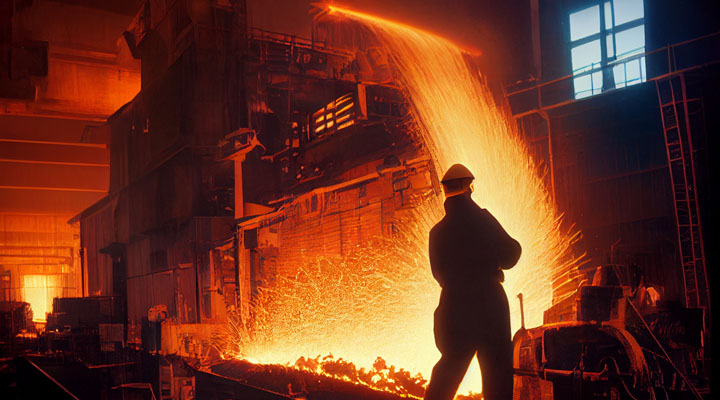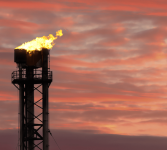What the government should have done about steel – Inside track
4 min read
After much speculation last week came the reality of a deal between government and Tata Steel to decarbonise the huge sprawling steelworks at Port Talbot in South Wales. Dominating the story was the potential for up to 3,000 jobs to be lost with Tata’s choice of direction, which seems to be – although the announcements were unclear – that it will replace all its existing production capacity with electric arc furnaces (EAFs) which recycle scrap steel rather than make virgin steel from ore.
It’s an incredibly difficult time for people who have dedicated their entire working lives to the steel industry in an area where significant quantities of new skilled jobs could be hard to come by. It’s the kind of trade off no one wants but that is right at the heart of what decarbonisation means for some parts of the economy. What is certain is that the approach to this massive and necessary transition should be addressed at a national scale, not on a case by case basis.
Steelbuyers want clean steel
The Port Talbot story is inevitably more complicated than it looks. Steel buyers are increasingly looking for clean steel and the industry globally is waking up to the fact that it is responsible for around ten percent of global carbon emissions. In Europe especially it is starting to invest in coal-free production. Besides this trajectory, the plant at Port Talbot is crumbling. It needs investment to keep going. The government isn’t wrong to say that, without it, a much larger number of steel industry jobs are at risk.
The sheer scale of the carbon savings that will be made by this change at Port Talbot are striking. Tata’s expectation is that they will be equivalent to five million tonnes a year of carbon dioxide over the next decade. That’s 1.5 per cent of the UK’s total carbon dioxide emissions last year and just from one site. We calculate it’s also equivalent to the emissions from around two and a half million petrol cars.
The case for switching at least half of Tata’s capacity to electric arc furnaces is strong. Indeed, it’s something Green Alliance has supported in two recent reports (see here and here). And, with governments around the world racing to offer large sums to their steel companies to modernise, including through EAFs, the government would have found it hard not to give Tata help with the capital costs of upgrading its site.
However, the way the deal was done has created a troubling precedent and narrative.
At one point the steel industry was negotiating with the government collectively for decarbonisation support. While not a comprehensive strategy of the kind the US is offering with the Inflation Reduction Act, at least this was better than the closed door site by site approach which, in this case, has inexplicably kept workers in the dark.
Workers should be part of the conversation about change
A better deal would have included steelworkers in the conversation and focused on a transition plan for the workforce, alongside the changes to equipment. Using EAFs needs fewer people than the current blast furnace approach to making steel and the other new way of making virgin steel with hydrogen. But, as we have reported, some lateral thinking by steelmakers could help them diversify into upstream and downstream steel markets to retain workers and expand their businesses.
And beyond the steel sector – although it’ll still need plenty of steel – the UK could invest in new low carbon opportunities in South Wales which is well positioned for floating offshore wind for example.
The deal from government includes up to £100 million to establish “a dedicated transition board to support both affected employees and the local economy” which at least recognises the issue but more details are not yet forthcoming.
Better operating conditions will cut the need for subsidy
There is also a better deal possible for the taxpayer. UK electricity prices are higher than in most European countries, making EAFs and green hydrogen (which requires electricity to produce) a relatively unattractive prospect for steelmakers. The government has acted to reduce some charges for vulnerable industries but has not addressed the underlying wholesale cost of power that could be cut using cheap new renewables. Despite our wealth of scrap metal – we export more scrap steel than we produce new – getting high quality scrap that has been properly sorted is challenging. And, although the market is changing, as long as there is someone willing to buy steel with a high carbon footprint, steelmakers that decarbonise risk being undercut by cheap, poor quality imports.
These kinds of operating conditions could be addressed in a consistent way across steel and other similar industries to improve the investment environment for plant owners and reduce the need for state subsidies.
Finally, a better deal for UK innovation and climate leadership would have included some encouragement and support for trialling hydrogen or other new virgin steelmaking techniques that could complement steel recycling. Growing the UK steel industry with these techniques is likely to provide more jobs than EAF steelmaking. They would also help the UK to remain at the forefront of the technology in an industry it pioneered.
The Port Talbot situation is unique in some ways but not in others. Steelmaking overall is responsible for about 15 per cent of the UK’s industrial emissions. The technological choices might be clearer for steel but other industries will have to follow in its footsteps. A more comprehensive, industry wide approach is needed to manage a transition we know is coming, to protect communities and build the industrial base for alternative jobs where they are needed in supporting or new industrial sectors.





